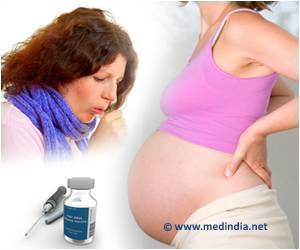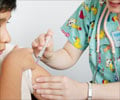Researchers have offered an explanation for the prevalence of childhood pertussis or whooping cough in US based on an examination of cases of childhood pertussis in California.

"Pertussis remains a poorly controlled vaccine-preventable disease in the United States, despite a well-established childhood vaccination program and high coverage. Although infants have substantially higher rates of pertussis compared with other age groups, data from the National Notifiable Diseases Surveillance System reflect a recent increase in the number of reported pertussis cases among children aged 7 to 10 years," according to background information in the article. "Recent studies have demonstrated waning protection following the current 5-dose DTaP schedule, but no study, to our knowledge, has compared fully vaccinated with unvaccinated children to estimate the durability of protection afforded by the childhood series."
Lara K. Misegades, Ph.D., M.S., of the Centers for Disease Control and Prevention, Atlanta, and colleagues conducted a study to evaluate the association between pertussis and receipt of 5 DTaP doses by time since the fifth DTaP dose in 15 California counties. Cases (n = 682) were all suspected, probable, and confirmed pertussis cases among children ages 4 to 10 years reported from January through December 14, 2010; controls (n = 2,016) were children in the same age group who received care from the clinicians reporting the cases. Three controls were selected per case. Vaccination histories were obtained from medical records and immunization registries.
Cases were more likely than controls to be unvaccinated (7.8 percent vs. 0.9 percent), female and older (the median [midpoint] ages of cases and controls were 9 and 7 years, respectively). Compared with controls, children with pertussis had a 89 percent lower odds of having received all 5 doses of DTaP. When children were categorized by time since completion of the series, using an unvaccinated reference group, children with pertussis compared with controls were less likely to have received their fifth dose within the prior 12 months (19 [2.8 percent] vs. 354 [17.6 percent]; estimated vaccine effectiveness [VE], 98.1 percent). This association was evident with longer time since vaccination, with odds ratios increasing with time since the fifth dose. At 60 months or longer (range, 60-83 months; n = 231 cases [33.9 percent] and n = 288 controls [14.3 percent]), the estimated VE was 71.2 percent. The estimated relative decline in VE was 27.4 percent from less than 12 months to 60 months or longer since fifth DTaP dose. Accordingly, the estimated VE declined each year after receipt of the fifth dose of DTaP.
"The increasing incidence of pertussis, changing epidemiology, and demonstrated decline in the estimated DTaP VE over time have raised concerns about the current U.S. pertussis vaccine program and may prompt consideration of alternative schedules," the authors write. "Ultimately, improved control of pertussis may require a vaccine that provides longer duration of protection or differently affects transmission in the community."
Advertisement









